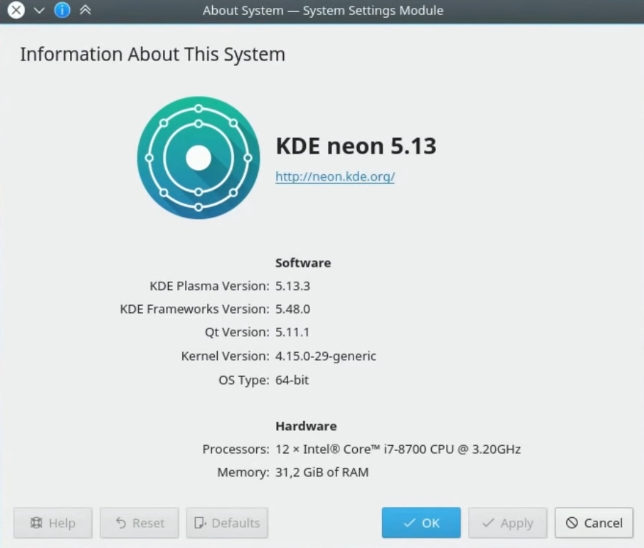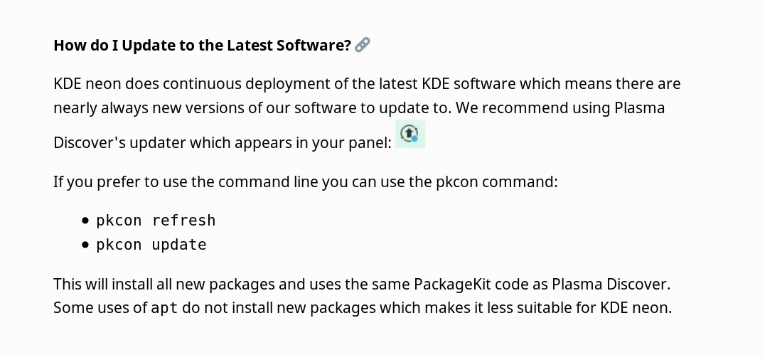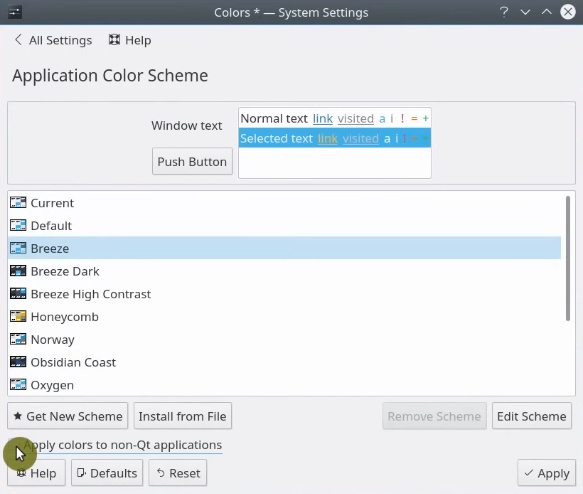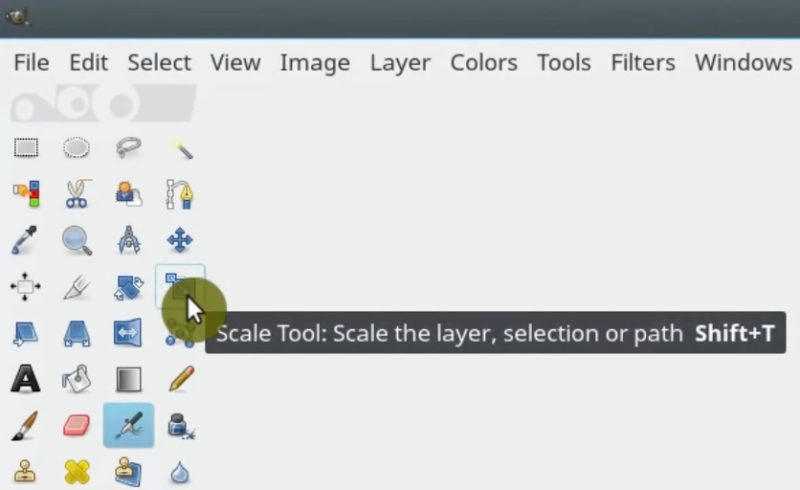KDE Neon Review

KDE Neon: the latest and greatest of KDE software on a rock-solid base of Ubuntu. Sounds very promising, isn’t it?
I installed KDE Neon on my office computer two months ago and in this KDE Neon review, I would like to share with you my experience. Also, I will answer the question: Is it the best KDE distribution?
When KDE Neon was released for the first time, I thought Wow! This could really become the best KDE distro. I have finally got a chance to install it on my production machine, test it extensively for two months and share my experience with you.
Video Review
KDE Neon review
Before I start I can already say KDE Neon is going to stay on my production machine at work for a while. Overall, it is a really good distribution. But I cannot say it is the best KDE distribution. Let’s have a look at its pros and cons.
Let’s start with the positive sides of KDE Neon.
PROS
1. It is stable
In short, I have not experienced a single crash.

And believe me, I use it very heavily every day. To give you an idea. My work assumes 4 virtual desktops and many applications open in each of these desktops.
The processor often has to work really hard performing computations at 100% load in all 12 threads. I often load almost all 32 GB of RAM. And this computer with KDE Neon works 24 by 7 with a reboot maybe once per week.

So, you can rely on KDE Neon to do a lot of work.
2. The installation process is very simple and user-friendly.
The installation process will be very familiar to you if you installed Ubuntu or any Ubuntu-based distro before. Everything is clear and intuitive in the installer of KDE Neon.

3. It is based on Ubuntu
Whether you like it or not, Ubuntu has become a standard as a Linux OS. Many developers first create a deb package specifically for Ubuntu and later for other distros. There are also many third party repositories created for Ubuntu. KDE Neon uses Ubuntu as a base. So, you can install any Ubuntu package in KDE Neon.

Also, if you have a problem, it is way easier to find a solution for Ubuntu than any other distribution. For example, you often can find a solution for your problem at AskUbuntu.com.

I use KDE Neon for work, so Ubuntu base was a must for me and maybe it is for you too.
4. KDE Neon is clean by default
KDE Neon comes with no applications pre-installed except a few essential ones like Firefox, Okular, VLC and some key KDE programs.

This may be a negative side for new users, but it was a really positive side for me. I prefer to have a clean desktop with minimum packages, so I can install only what I need.
I installed these applications: Synaptic, Dropbox, FileZilla, Terminator, Google Chrome, Thunderbird, GIMP, Gwenview, Inkscape, LibreOffice, Okular, PyCharm, Skype, Terminator, and KColorChooser. There are also many command line programs I installed in addition to these, but I cannot recall them all.
5. KDE Neon has a recent Plasma 5 desktop
If you don’t know, I am a big fan of KDE. Plasma 5 is the most powerful and productive desktop for me. I used to run Linux Mint 17 with KDE 4 desktop at work, but when I installed Arch Linux with the latest Plasma 5 it was little uncomfortable to look at KDE 4 when I knew there was Plasma 5. So, having a recent version of Plasma 5 on a solid base of Ubuntu is a perfect set up for a working machine.
During the last two months, KDE Neon upgraded their Plasma 5 desktop several times. It is Plasma 5.13.3 on KDE Neon User edition at the moment of writing this review. This is the same version as Plasma desktop as on my home computer with Arch Linux. So, this is really nice.

In addition, if you want to be on the bleeding edge of the Plasma 5 desktop but you don’t want to install Arch Linux, you can also install KDE Neon Developer edition.

However, I can say KDE Neon User edition is also updated regularly and the difference when a new version of Plasma 5 comes to Arch and KDE Neon is not that big. Maybe a few weeks.
So, the whole concept of the latest and greatest of KDE software on a rock-solid base of Ubuntu is very appealing feature of KDE Neon.
That’s all I wanted to say in terms of pros. Now, let’s have a look at some cons.
CONS
1. It is not a distribution for new users
You need some experience to run KDE Neon. There are almost no pre-installed applications. You have to install everything you need. Of course, it can be both pros and cons. But I think some new users may have difficulties finding and installing programs they need.

2. Software Center is still not good enough
This is related to the previous point. A new user will most likely use the Software Center to install programs and to update their system. From my experience, it doesn’t work really well.

The Software Center doesn’t crash, which is good. But it is very-very slow regardless of whether you install programs or update your system.
For me it is OK, I mostly use the Synaptic package manager to install programs and I update through the command line.

But it may be a problem for those who want to use the Software Center exclusively.
3. Confusion between the package managers pkcon and apt
KDE Neon recommends using pkcon as a command line package manager. This is different from the Ubuntu package manager apt, which is also present in KDE Neon.

Most users will assume they can use apt because KDE Neon is based on Ubuntu, but KDE Neon recommends using pkcon. I found this information accidentally on the KDE Neon website. It says that pkcon is more reliable to handle the updates.

So, I use pkcon to update the system. It updates the system but its command line interface needs to be polished. For example, after the updates, this line shift (see the image below) happens all the time. This is not nice.

So, I update the system with pkcon, but to install packages I use a well familiar apt.

My understanding is that you need to use pkcon to install updates, but apt is fine for the rest.
4. KDE Neon is little outdated in its core
Because KDE Neon uses Ubuntu long-term support base, the developers need some time after the release of Ubuntu LTS to port it to KDE Neon. For example, currently, KDE Neon is based on Ubuntu 16.04, while there is Ubuntu 18.04 already.

It is not a serious problem if you don’t need the latest kernel. I needed the latest kernel. My computer has very recent processor Intel Core i7-8700 with integrated Intel UHD Graphics 630. To work correctly, it required the kernel 4.15 or later. But KDE Neon had the kernel 4.13 at that time.

Luckily the kernel 4.15 was in the repositories, and I was able to install it.

My graphics worked fine after that.
I have two more complains about KDE Neon, which I hope will be fixed soon.
5. Non-QT apps have problems with tooltips messages
As you can see in some applications, tooltips are simply not readable.

You can fix it by going to Settings -> Colors.

And disable Apply colors to non-QT apps.

Now, the tooltips are readable.

It is still surprising to see this problem in KDE Neon as this is a known bug for a long time. I have seen other distributions fixed this problem.
6. Bug in favorite apps
I was not able to remove some of my favorite apps in the KDE menu. Normally, you can easily remove some of the favorite apps and add new ones.


The problem was that after the system reboot or log out, some removed favorite apps came back. In my case, Kate was showing up again and again after I removed it.

I fixed that problem by deleting these files ~/.local/share/kactivitymanagerd/resources/.
rm -r ~/.local/share/kactivitymanagerd/resources/
I logged out, logged in, and set my favorite apps again. After these steps, everything worked fine.
Conclusion
To conclude, KDE Neon is a great distribution if you like Plasma 5 desktop and Ubuntu base, but you need to spend quite some time to set up and configure it. Not as much as you would spend with Arch Linux, but still a sufficient amount of time.
Unfortunately, there is not the best KDE distribution at the moment.
If you need something sort of install and start working, try Kubuntu. It is a more user-friendly distribution than KDE Neon, but it also not perfect. Whenever I try Kubuntu I always find obvious bugs in it.
You can also install Linux Mint 18 KDE, it has little older Plasma version but it is Plasma 5 and the distribution is supported until 2021. It is better than Kubuntu and KDE Neon in terms of stability and user-friendliness if you don’t mind having older Plasma version.
What do you think about KDE Neon?
I also recommend checking out my review of Solus.
 Never miss a post from us, subscribe to our newsletter
Never miss a post from us, subscribe to our newsletter
Comments
Patrick
We slowly introduced it starting just over a year ago and now all 6 of our desktop/laptops have it installed. Right now I am in the process on upgrading one to Ubuntu 22.04 and that was painless. Boots up and consumes less than 900MB of ram. Slick and fast on an SSD computer with a decent CPU.
Yes, you do have to configure a bit and the confusion is apt vs pkcon is there, but hey, it’s a learning experience. The Discover store everything we need and we all rave about Libre Office. Even for Windows users!
Nah, we won’t be going back to Windows but always on the hunt for a better distro but not sure there is one out there.
analogtek
Neon could be a great distro. But is tainted with ubuntu DNA.
Mark_UK
This article is very useful. However, it would benefit from being updated.
Harvey
I also thought o'boy a KDE distro Great, but it's built on Ubuntu and for me that spoiled it Ubuntu may be the most popular OS but by far not the best. Sorry I'll stick with Open SUSE or PCLinuxOS thanks
Andreasdimo
Hello my friend. I read all your post and watch all your video, and i respect very much your opinion. Thats why i like to ask you, what do you prefer most, KDE Neon or Manjaro KDE for normal daily use. I like Manjaro because is Arch based but it seems a little heavier than NEON. What do you think is better for daily home use?
Average Linux User
I prefer KDE Neon. I use KDE Neon at work, and I am very happy with it.
oboltyo
I have been using KDE Neon as well and find it one of the better set ups ever. Here is the thing… Lately I have been watching memory - a little funny as I have 32 gigs - BUT - I tried Debian and I know it uses an older version of Plasma - but after checking over and over - debian dumps closed program memory way better then the ubuntu base does. I do not know why, but the numbers are unbelievable. Just not sure if debian will work for everything with the older apps.
Average Linux User
oboltyo, thank you for the comment. I have not noticed much difference between Debian and KDE Neon RAM performance. Ubuntu-base usually include more packages than Debian. This may be a reason but I am not sure.
Ruben
For me, I tend to stick to LTS versions so those cons in Neon wouldn't apply to me. One thing that I think should be mentioned is that the KDE community has been on a real bug-killing spree for the last year and a half. The rate of improvement in KDE plasma (and related apps) is much greater than most other software right now. I started with Kubuntu which had some flakiness (always slow to connect to wifi, always had to re-sign into Skype, and couldn't use MTP to connect to a phone in order to mass-save and delete hundreds of photos). This basically drove me back to Cinnamon. I recently switched to Neon and the difference was like night and day. All these gripes were killed (the MTP fix really surprised me). If only KDE could produce a decent PIM; I'm still stuck on Evolution which works well enough and looks decent if you stick with default Breeze. Maybe when Mailspring adds a calendar app (supposed to be coming later this year) I'll go with that instead.
By the way, installing LibreOffice through Discover looks awful. I used Muon Package Manager and installed libreoffice libreoffice-style-breeze ttf-mscorefonts-installer and it behaved just like Kubuntu as far as I could tell.
Average Linux User
Ruben, Thank you for sharing your experience. I love KDE Neon more and more. I will probably replace my Arch Linux with Plasma 5, which I use at home, with Neon. For an email client, I use Thunderbird with Lightening for Calendar. It is not KDE native, but it the best mail client on Linux in my view.
masonbee
I am having a great time on KDE neon but I get your cons as well…although I can't say that I had noticed the tooltip one. It isn't far from being a distribution for new users though. A simple setup guide and 99% of people won't have to change anything afterwards. Discover is terrible though. Muon would be fine if it had the one option that synaptic does which is right click and install associated packages singly (In Muon you can install all but not individually…or see them I think). The pkcon thing threw me at well. KDE neon is now based on 18.04 so the updated kernel should be solved. I have been using it (both the 16.04 and 18.04 versions) for a years or more now and it rocks. Similar setup with a few differences(https://masonbee.nz/kde-neon-making-my-perfect-desktop/).
Average Linux User
Thanks for sharing your feedback about KDE Neon. BTW, I would also remove snapd.
valentin
For me is the best . I tried a lot, cinnamon , gnome various kde distro but in the end Neon prevail. Once you set it ( 2 h for me) it is the best in matter or productivity. I use it as my workstation and do not disappointed me. Clean and lightweight as I need . BTW: good article regards
Average Linux User
Thanks for the feedback. I also like Neon more and more. I even think about replacing my Arch Linux by KDE Neon :)
Wagner
Today, I did that. Replaced my Arch by Neon. And you, did already?
Average Linux User
Not yet. Somehow I always have something more important to do 🙃
Michael Biller
Great article. I have been using KDE Neon as one of my daily drivers for close to two years. The stable Ubuntu base makes it ideal for my needs and the latest 18.04 has proven to be excellent, as well. I agree that Neon is probably not the best choice for beginners. For those with experience it is a great choice and it allows the user to essentially make it what you want since you have control over what software is installed. KDE Neon has been nothing but great. Considering how bleeding edge it is, I am amazed with the stability it offers. I am also a huge openSUSE fan but I must admit it has been an overall better experience than Tumbleweed.
Average Linux User
Hi Michael, Nice to see your comments again. Yeah, KDE Neon is probably my favorite distro right now. I still like Arch, Mint, Debian, but Neon is the most appealing right now.